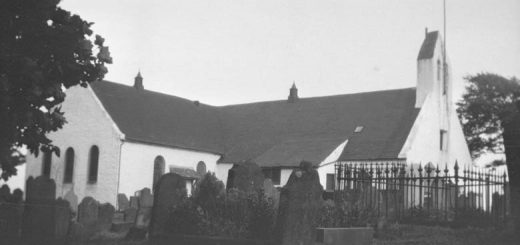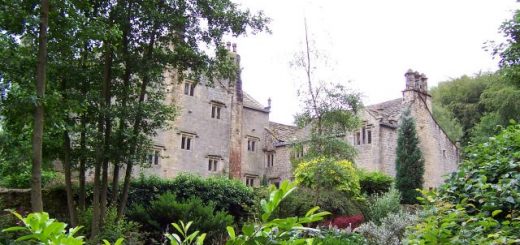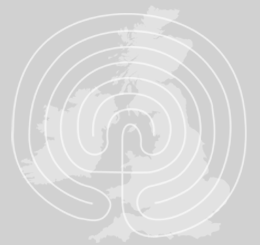Do We Need A Thermal Sweep?
I caught a few episodes of Ghost Hunters, featuring the the group that seems very popular in America these days…..TAPS (The Atlantic Paranormal Society). It is a good name as the two key figures are also plumbers. Each vigil is of course done in the dark and starts off with a "thermal sweep" with somekind of thermal camera that picks up heat signatures. Sometimes thes
I caught a few episodes of Ghost Hunters, featuring the the group that seems very popular in America these days…..TAPS (The Atlantic Paranormal Society). It is a good name as the two key figures are also plumbers. Each vigil is of course done in the dark and starts off with a "thermal sweep" with somekind of thermal camera that picks up heat signatures. Sometimes these pick up what may be ‘ghosts’, looking amazingly like a person.
So, are these ghosts likely to be members of the film crew? Does anyone actually know of a ghost that gives of a heat signature?
I’ve never done a thermal sweep before of any location I have been involved in investigating. Is it a good idea?




Thermal Sweep
Sounds like one of the police reality shows: you know the ones filmed from the police helicopters equiped with thermal cameras, where there is no chance of escape, unless you have a handy space blanket, or the uncanny ability to cool your body temperature to that of the surrounding air.
It’s a great theory though: perhaps ghosts could become a new form of renewable energy, does this make me a cynic?
Anyway never heard of this before in any investigation, perhaps there is a viable reason though.
Would bring a whole new
Would bring a whole new meaning to ghost "power"!
But I thought that ghost presence was meant to drop the temperature ? So a heat source with a human outline is most likely to be a human on the team. Unless it is to prove there is no one making them noises, not saying it’s a weak excuse or nothing as the camera could be pointing at a darkened room but the microphone at the radiophonic workshop in the heated Winebago out side.
Not being funny these shows always strike me as a load of hooey. Just because the cameras are there these "spirits " start to jump though hoops for them. More likely to be spirits from behind the bar rather then spirits from beyond the grave.
Daniel if you are a cynic then so am I fella !
Could be that they want to check the house is cool and not going to creak at the wrong time when they are addressing the folks at home as retakes are bad for the whole spontaious feel they like on these shows. I suppose that one day I should go on one of these vigil thingys to see what all the fuss is about, but I just can’t get over the feeling they are just about making money and nothing to do with ghost hunting.
As for why they re using a thermal camera no idea. Sorry
I usually avoid these shows
I usually avoid these shows like the plague, especially ones about groups that do vigils in the dark. But every now and again I check an episode or two out just to see what other aspects they are trying to pass off as ideas for gathering evidence.
The original idea for using
The original idea for using thermal imaging started I think in the U.S. around the early 1970s. That is when I first proposed the use of such devices and their then size and expense were becoming less prohibitive.
I conceptualized exactly as suggested, that the device should give form to the ‘cold spots’ which had been reported for centuries in connection with active locations. I was hoping we might be able to visualize these physical phenomena and was curious to see if a shape or form might be shown. These ideas manifest from work with sensitives, many of whom were routinely tracing outlines reminiscent of human forms when asked to try to detect the location of a suspected haunt.
Now that thermal imaging has become available and affordable, the results are mixed. While some data is suggestive, all to often the one concern I had in the early days has proved true: it is far too easy to get false hits if one does not understand the fundamentals of thermals. As to why actual phenomena might register warm, it should be noted that in a small percentage of anecdotal reports heat, not cold, has been been indicated and associated by apparent percipients with the phenomena events.
PhenomInvestigator wrote:I
[quote=PhenomInvestigator]
I conceptualized exactly as suggested, that the device should give form to the ‘cold spots’ which had been reported for centuries in connection with active locations. I was hoping we might be able to visualize these physical phenomena and was curious to see if a shape or form might be shown. .[/quote]
I suppose that makes some sense now: I was thinking more about heat, but if cold spots are a common reported occurance in hauntings then these events would registed on a thermal camera if they were a physical phenomena, and could prove/disprove a reported cold spot. I have experienced a cold spot on a vigil that was confirmed by other investigators but, there was no change in temperature recorded at all on digital thermometers. I imagine a thermal camera may work in such a situation but are they that accurate? At least the ones that are avialable on limited budgets.
(I think we can disregard tv reality shows as forms of unbiased investigation)
I think quite a few reported
I think quite a few reported cold spots turn out to be unnoticed drafts, blowing on the individual making them feel colder. I have found a few where it is reported to feel like it has suddenly gone colder but in actual fact no recorded drop in temperature was found. This could mean the thermometer at the time was not good enough, was not being used correctly or there was no physical drop in temperature.
Did you ever geta round to testing your theory Phenominvestigator and did it provide useful results?
The theory seemed to have
The theory seemed to have merit. I have personally noticed that temperature shifts both up and down are sometimes not detectable. However we must be careful here. The problem in fact may be with the sensivity of the thermal sensing device. Many temperature probes for example have reaction times measured in the tens of seconds or longer. A transient temperature shift will not be detected by these sorts of devices. Here, the thermal imager actually has an advantage. While there is an ‘integration time’ in the device, the reaction times are typically quite a bit shorter and therefore more suited to this purpose.
As regards ‘cheap’ devices, I would love to know where one could find one for under a few thousand (pounds or dollars, doesn’t really matter which). The devices that are typically used by me are at the high end of the price spectrum, since I am doing research that mandates using the best equipment available whenever possible.
Lucky bugger ! 😉
Ian can
Lucky bugger ! 😉
Ian can you pop round my house and find where the cold draft is coming from in the middle of our front room? I can’t suss it out ! I’m still more willing to beleive it’s a draft then a spirit in residence!
But the wife does say she has seen a man with a cane in the hall way.
Any offers ?
This article might be
This article might be helpful.
Thanks for the link
Thanks for the link Mysteryshopper. Maurice Townsend really seems to know his stuff.
I really do need to plough through ASSAP’s website more often :). So, the article suggests there is no compelling evidence that ghosts appear on thermal imagers. Can anyone dispute this? I know I can’t.
Just one quick thing.One of
Just one quick thing.
One of the most definitive "proofs" offered about thermal imagining applied to paranormal research is the famous "Ghost Knight of Bardi". Bardi is a castle in the Italian Appenines about thirty miles southwest of Parma which has become somewhat of a tourist attraction thanks to its stunning views and, more importantly, much advertised haunting.
A thermal image of the "Ghost Knight" was taken in 1999 by two researchers from the University of Bologna using a thermocamera. You can see the famous picture here: http://www.fantasmitalia.it/bardi.htm . Just scroll to the bottom of the page, should you need translation just ask. A giant copy of this picture greets visitors to the castle.
Curiously this picture bears a great resemblace to a painting of Francesco Gonzaga, Marquis of Mantua and a condottiere of great renown, by the great painter Mantegna. Even more curiously the allied army led by Francesco Gonzaga suffered a catastrophic defeat at the hands of the French in 1495 at Fornovo, which is just a few miles away and can be seen from the castle itself. Gonzaga escaped with his life but, despite having shown great personal valor, was rightly criticized for his outdated tactics which allowed the Charles VIII to defeat his army so quickly.
This opens very interesting possibilities on the matter.
Mauro wrote:
This opens
[quote=Mauro]This opens very interesting possibilities on the matter.[/quote]
It’s an image of something. Could be a reflection. Is there any good evidence that it is a ghost?
According to reports the
According to reports the image was taken by the thermocamera on a short flight of stairs leading to a place called "The Executioner’s Room". 31 frames were taken over a one hour period and this is the only one showing an anomaly. According to analysis the anomaly is about 0.4°C cooler than the surroundings except for the noticeable spot in the middle which is about 1.3°C cooler.
The room had been picked because it’s traditionally believed to be the "most haunted": four researchers and two castle staff members were guarding the room to insure against intrusions. About your question: nobody saw anything at the moment nor noticed anything unusual so it’s not a thermal image of a certified ghost. It’s "just" an anomaly which, with a bit of imagination, has been seen as a bearded man with long hair.
Personally I favor a gust of cold air playing tricks or equipment malfunction. But again your guess is as good as mine.
Cold air should make no
Cold air should make no difference as it is IR we’re talking about. However, it could be a reflection. Was anyone around when the photo was taken? Is it a security camera or was a thermal imager being used for a some special purpose?
Mauro
Is the thermal image
Mauro
Is the thermal image cropped or is there a non-thermal image of the location it’s taken from? Looks to me like an overhead shot of a rat or something which has been moving around, or something along those lines.
Important detail
I realized I forgot to mention something quite critical which was the source of personal embarrassment years ago when I first discovered it. Of course the thermal imagers measure black body radation in the IR range, in other words they show the thermal mass of objects. They do not read air temperatures. So how to use an imager to show changes in the temperature in an area? We tried several ideas and finally came used a target object with a known thermal mass. This object is placed in the environment over a period of time so that it tracks the temperature changes occuring in the immediate proximity. This is not the same thing as pointing an imaging camera at a point and reading whatever emissions are occurring on surface bodies in that direction. In this approach, we put a known body in free space and image that body specifically, watching for an indication of a temperature shift on the object. This avoids some of the usual pitfalls of using thermal imagers with the tradeoff that the device must be kept stationary for a period of time, therefore limiting the area of detection for that period.
PhenomInvestigator
[quote=PhenomInvestigator]Of course the thermal imagers measure black body radation in the IR range, in other words they show the thermal mass of objects. [/quote]
You can’t equate black body radiation with thermal mass directly. Thermal mass is about heat flow while black body radiation is about surface temperature and emissivity.
What substance did you use as your target? Presumably you wanted something with very low thermal mass so that it reacted quickly with large temperature differences (a metal?). How did you thermaly isolate it from objects it was touching?
Wouldn’t it just be a lot simpler to put a thermometer in the area of interest? It would be much more accurate, simpler to read and faster to react?